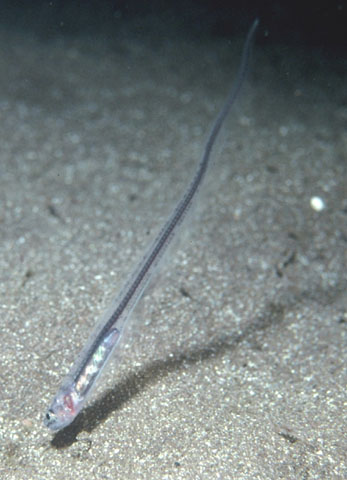| Carapidae (Pearlfishes), subfamily: Carapinae |
| 20.8 cm TL (male/unsexed) |
|
demersal; marine; depth range 1 - 150 m, non-migratory |
| Eastern Atlantic: including the Mediterranean. Probably south to Ascension Island. |
|
Dorsal soft rays (total): 37-39. Eel-like, moderate to shallow body depth; cardiform teeth present but restricted to upper jaw symphysis; swim bladder constricted forming two chambers; lacking enlarged dentary or premaxillary fangs, dentary diastema, pelvic fins and swim bladder rockerbone (Ref. 34024). Possesses a free, movable maxilla (Ref. 6347). |
| Common species (Ref. 34024). Adults typically live as commensals in the gut of shallow-water holothurians, Holothuria tubulosa and Stichopus regalis (although some deep-water records exist, see Ref. 6347). Prejuveniles (tenuis larvae) probably inhabit the same host species while the vexillifer and egg-rafts are planktonic. The fish may partly protrude or entirely leave its host at night to feed on small fish and benthic invertebrates. Reproduction noted in July-September. (Ref. 4741). |
|
Least Concern (LC); Date assessed: 08 July 2014 Ref. (130435)
|
| harmless |
Source and more info: www.fishbase.org. For personal, classroom, and other internal use only. Not for publication.
